= Maihueniopsis platyacantha (Pfeiff.) D.R.Hunt
Cactaceae Syst. Init. 25: 24. 2011 [Oct 2011]
Accepted Scientific Name: Maihueniopsis darwinii (Hensl.) F.Ritter
Kakteen Südamerika 2: 389. 1980
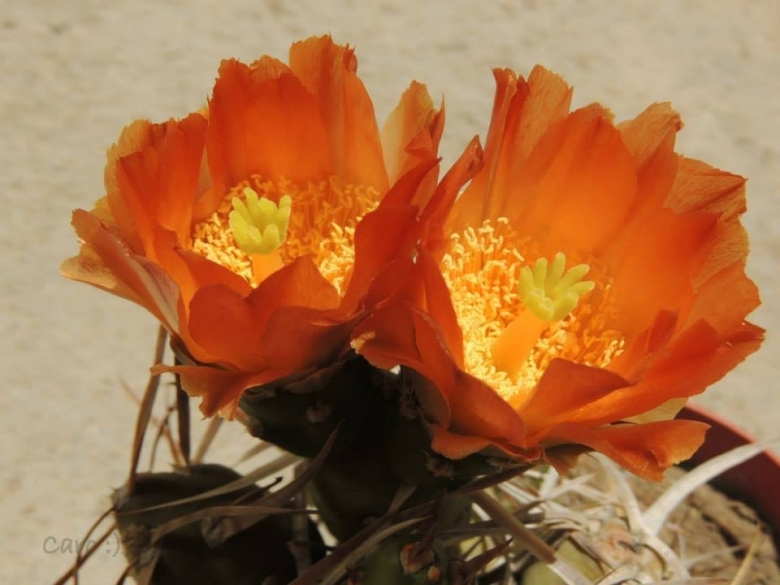
Opuntia platyacantha (Maihueniopsis platyacantha) Photo by: Carolina González
Origin and Habitat: Maihueniopsis platyacanthaSN|20946]]SN|20946]] is reported in Argentina (Mendoza, Neuquen)
Altitude range: About 700-2300 above sea level.
Synonyms:
See all synonyms of Maihueniopsis darwinii
back
Accepted name in llifle Database:Maihueniopsis darwinii (Hensl.) F.RitterKakteen Südamerika 2: 389. 1980Synonymy: 15
back
Description: Maihueniopsis platyacanthaSN|20943]]SN|20946]] is a low growing cactus densely covered by long flat spines that forms clumps up mats up to 10 cm in diameter and height. Originally described from cultivated specimes as Opuntia platyacanthaSN|20947]]SN|20947]] by Pfeiffer(1837) it has for a long time listed in the synonymy of Cereus syringacanthusSN|7352]]SN|7352]] (= Tephrocactus articulatusSN|7330]]SN|7330]] f. syringacanthus) due to the similarity in spine shape. This is a species of doubtful status (but very appreciated in cultivation) and most authors now considered it only a flat spined variant of Maihueniopsis darwiniiSN|20943]]SN|20943]]. In particular it is not clear if there is a distinction between this "species" and Maihueniopsis darwiniiSN|20946]]SN|20943]] var. hickenii.
Root: Enlarged tuberose on plants that appear to be quite small above ground.
Stem (cladodes): Sub-erect, articulated, 4-7.5 cm long, c. 2 cm in diameter, olive-green ovoidal, slightly tuberculate. The plant also has the ability to spread itself when loosely attached joints break away from the main plant and root wherever they land.
Areoles: Approx 4 mm in diameter, circular beset with short silky white to brownish felt.
Spines: Four to 8, stiff, flat, to 5 cm long, 2-4 mm wide and very sharp, present in the upper areoles but absent in the basal areoles of the cladode. They mostly point forward but some spread in all directions.
Leaves: The leaves on Maihueniopsis are very small and fall off early.
Flowers: Solitary larger than the articulations, and very decorative, dirty yellow-orange 2.5-6 cm in diameter.
Blooming season: Late spring to early summer. Flowering is erratic, though well worth the wait.
Fruit: Fleshy similar to the joints for shape and colour. At maturity became yellow-orangish.
Bibliography: Major references and further lectures
1) Louis Pfeiffer “Enumeratio diagnostica Cactearum hucusque cognitarum” 1837
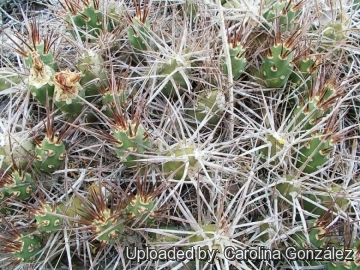 A large clump in habitat at Bajada Del Agrio, Neuquen, Argentina. (Maihueniopsis platyacantha) Photo by: Carolina González
A large clump in habitat at Bajada Del Agrio, Neuquen, Argentina. (Maihueniopsis platyacantha) Photo by: Carolina González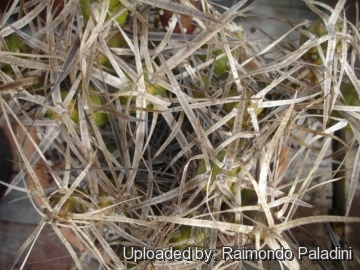 Opuntia platyacantha (Maihueniopsis platyacantha) Photo by: Raimondo Paladini
Opuntia platyacantha (Maihueniopsis platyacantha) Photo by: Raimondo Paladini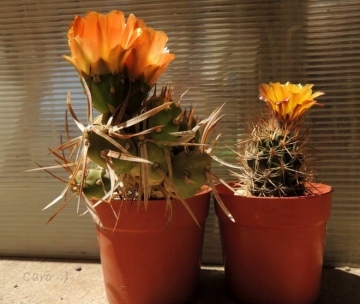 Maihueniopsis platyacantha & Austrocactus coxii (Maihueniopsis platyacantha) Photo by: Carolina González
Maihueniopsis platyacantha & Austrocactus coxii (Maihueniopsis platyacantha) Photo by: Carolina González Habit at Bajada Del Agrio, Neuquen, Argentina. (Maihueniopsis platyacantha) Photo by: Carolina González
Habit at Bajada Del Agrio, Neuquen, Argentina. (Maihueniopsis platyacantha) Photo by: Carolina González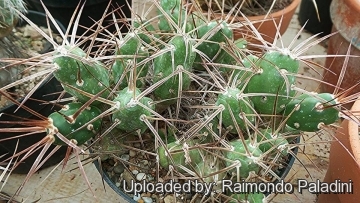 Opuntia platyacantha (Maihueniopsis platyacantha) Photo by: Raimondo Paladini
Opuntia platyacantha (Maihueniopsis platyacantha) Photo by: Raimondo Paladini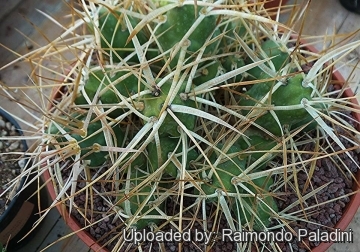 Opuntia platyacantha (Maihueniopsis platyacantha) Photo by: Raimondo Paladini
Opuntia platyacantha (Maihueniopsis platyacantha) Photo by: Raimondo PaladiniCultivation and Propagation: Maihueniopsis platyacanthaSN|20943]]SN|20946]] (= Maihueniopsis darwiniiSN|20946]]SN|20943]]is) is susceptible to overwatering, but need enough water during the growing season. This mountain cactus, because of the elongated fat taproot, necessitate deep pots and a well drained mineral potting mix. It prefers a full sun exposure, but should be protected from excessive heat and sun in summer.
Growth rate: It make low, thick mats or mounds over time and are most vigorous in deep, loamy soils with some supplemental water during hot, dry spells.
Frost Tolerance: They tolerate light frost -5 (-10 or less) °C. Need to be kept in a cool place during winter rest this is important for the flowers as well as for their health. Without this cool winter period they normally wont get many buds. Keep dry in winter to avoid rot. Need a sufficient amount of air. These odd, little cacti do not mind being buried under a thick layer of mulch, cloth, or snow for the entire winter, but it is not necessary.
Propagation: Seeds are extremely difficult to germinate. Best reproduced from rooted cuttings. Grafting is sometime used because it is quite root prone on its own roots and to create a back-up for plants in collection.
Warning: Spines are extremely sharp and very dangerous (This is one of the most dangerous of all cactus). Handle it with extreme caution, and keep it away from gangways and areas frequented by children and animals.

















